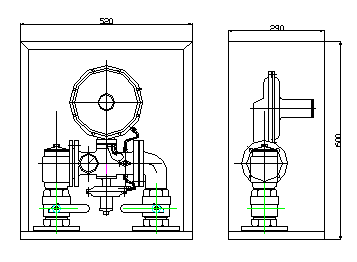
Dec . 04, 2024 10:05
Back to list
معدات الغاز الطبيعي
Equipment for Natural Gas An Overview
Natural gas is a crucial energy source that powers homes, industries, and transportation. As a cleaner fossil fuel, it has gained popularity due to its lower carbon emissions compared to coal and oil. To harness its potential effectively, a range of specialized equipment is required to extract, process, transport, and utilize natural gas. This article will delve into the essential equipment associated with the natural gas industry.
1. Extraction and Production Equipment
The journey of natural gas begins at the extraction stage, where it is brought to the surface. This process involves several key pieces of equipment. Drilling rigs are essential for creating wells deep into the earth, allowing access to gas reserves. Advanced drilling technology, such as horizontal drilling and hydraulic fracturing (fracking), has revolutionized the efficiency of gas extraction, enabling access to previously unreachable reserves.
Once the gas is extracted, it must be separated from other substances like water, oil, and impurities. Separators and dehydrators play critical roles in this phase. Separators use gravitational and mechanical processes to distinguish between gas, liquid, and solid components. Dehydrators then remove moisture from the gas, ensuring it meets the quality standards before it is transported.
2. Processing Equipment
.
In addition to these, compressors are used to increase the pressure of natural gas. This is significant for both transportation and storage as it allows for a denser packing of gas into pipelines, facilitating movement over long distances. The efficiency and reliability of compressors can greatly impact the overall economics of gas transportation.
معدات الغاز الطبيعي

3. Transportation Infrastructure
The transportation of natural gas requires a complex network of pipelines and storage facilities. Pipelines are the backbone of the natural gas industry, moving gas from production sites to processing plants and ultimately to consumers. The construction of pipelines involves specialized equipment such as welding machines and trenchers, which ensure that the pipes are installed securely and can withstand varying environmental conditions.
In addition to pipelines, LNG (Liquefied Natural Gas) carriers play a vital role in transporting natural gas across oceans. These specially designed ships keep natural gas in its liquefied state at -162 degrees Celsius, allowing for efficient transport over long distances where pipelines are not feasible.
4. End-Use Equipment
At the end of the supply chain, various pieces of equipment are needed for the final distribution and utilization of natural gas. Burners and boilers are common in residential and industrial settings for heating purposes, while gas turbines are used in electricity generation. Additionally, natural gas engines are increasingly used in transportation to power vehicles, contributing to cleaner mobility solutions.
Conclusion
The natural gas industry relies on a diverse array of equipment at every stage, from extraction to end-use. As technology advances, the equipment used in this vital sector continues to evolve, making the production and consumption of natural gas more efficient and environmentally friendly. Understanding the importance of this equipment helps highlight the complexity and significance of the natural gas supply chain in today's energy landscape.
Next:
Latest news
-
Safety Valve Spring-Loaded Design Overpressure ProtectionNewsJul.25,2025
-
Precision Voltage Regulator AC5 Accuracy Grade PerformanceNewsJul.25,2025
-
Natural Gas Pressure Regulating Skid Industrial Pipeline ApplicationsNewsJul.25,2025
-
Natural Gas Filter Stainless Steel Mesh Element DesignNewsJul.25,2025
-
Gas Pressure Regulator Valve Direct-Acting Spring-Loaded DesignNewsJul.25,2025
-
Decompression Equipment Multi-Stage Heat Exchange System DesignNewsJul.25,2025

